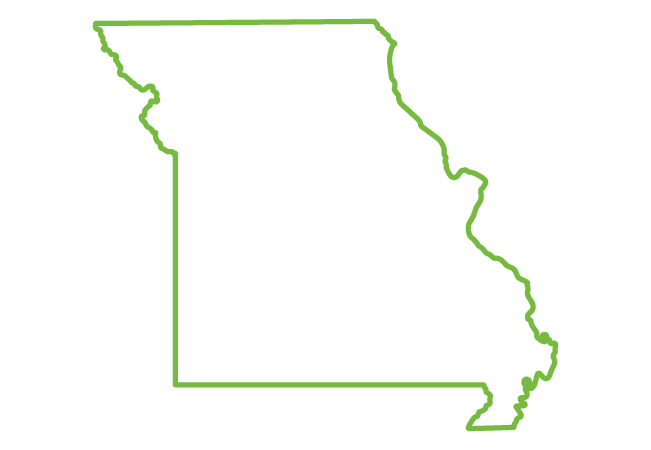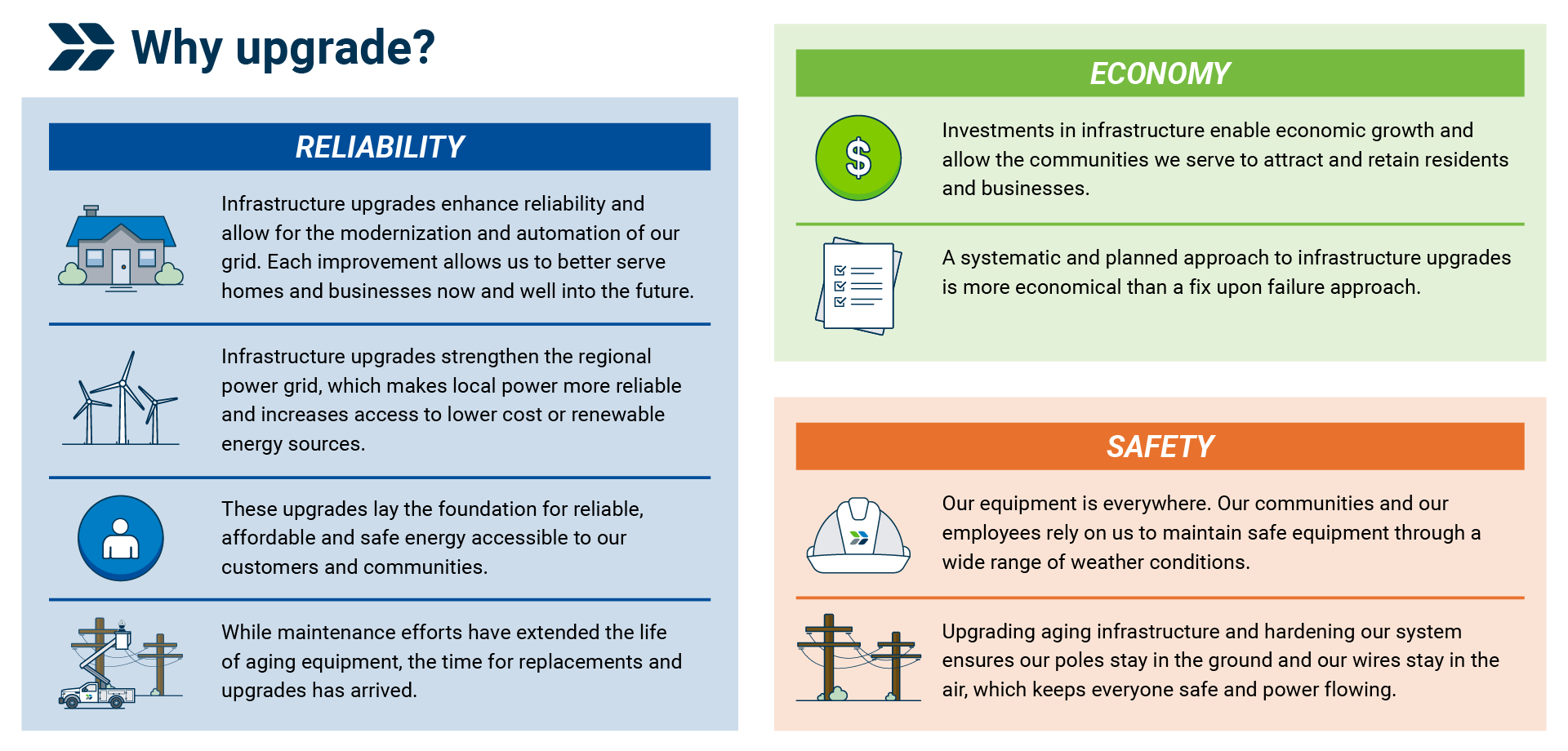Transmission Project Information
Find information for current projects in Evergy jurisdiction.
Current ProjectsWhat exactly is transmission? Get more information.

Kansas

Missouri
Property owners
Evergy’s real estate team acquires easements necessary for electrical transmission line projects. The team is committed to open, transparent and frequent communications with property owners.
When Evergy rebuilds an existing transmission line or constructs a new transmission line, it may be necessary to acquire easements. An Evergy project representative will contact property owners affected.
The project representative will share information regarding the project. During the acquisition process, the project representative will work with property owners, discuss proposed easement locations, rights, compensation, construction requirements, potential access routes, land restoration, post-construction and damage settlements. We will work with landowners throughout the siting, design and construction process to minimize impacts to their properties. It is our goal to reach negotiated agreements with all landowners.
View property owner FAQs in the Help Center...
History
Evergy is committed to delivering clean, safe, reliable sources of energy today and well into the future. So we’re embracing alternative energy sources to generate more power with less impact to our environment and adopting new technologies that let our customers manage their energy use in ways that work for them.
Delivering power to Evergy’s 1.6 million customers across Kansas and Missouri uses 10,200 miles of transmission lines, 60,400 miles of distribution lines and nearly 875 substations.
Evergy’s transmission system has built out as the communities we serve grew. The communities in our service area continue to grow, which means we need to continue to upgrade our infrastructure to meet their current and future needs. We have also built additional transmission lines into communities because the redundancy helps ensure reliability. The expansion of renewable energy also requires infrastructure upgrades and investment.
Get more information below...

Overview Timeline

Buffalo Flats
- 345kV Transmission Line Upgrade: Buffalo Flats Substation (W 13th Street North and North 279th Street West) to the Oklahoma border north of Delaware, OK.
De Soto
- 345kV Transmission Line Upgrade: Waverly Substation (95th Street and Waverly Road) to Clearview Substation (a new build at 95th Street and Sunflower Road).
Lawrence
- Transmission Line Upgrade: Free State Substation (located near Kasold Drive and Bob Billings Pkwy.)
Manhattan
- New 115 kV Transmission Line: North Manhattan, Zion, Old Post and South Alma Substations
McNew
- 345kV Transmission Line: the future McNew natural gas plant (near South McNew Road and Highway 50) to Reno County substation (North Willson Road and East 56th Avenue).
Riverside
- Transmission Line Upgrade: 17th St and Emporia over to 11th St and Jefferson
Topeka
- Transmission Line Upgrade: Second and Madison substation (located at Second and Madison streets) to Deer Creek substation (located near Second Street and Kellam Avenue) and Deer Creek substation to the Sixth and Golden substation (located at Sixth and Golden avenues)
Wichita
- Transmission Line Upgrade: 17th Street, Mossman St. and the Wichita State University campus
Parsons
Fayetteville
- Transmission Line Upgrade: 13 Hwy in Fayetteville, MO
Raytown
- Substation Upgrades: Expansion near East 59th Street and Woodson Road
St. Joseph
- Transmission Line Upgrade: Cook Rd. in St. Joseph, MO
Positive impacts...

Clean energy committment
